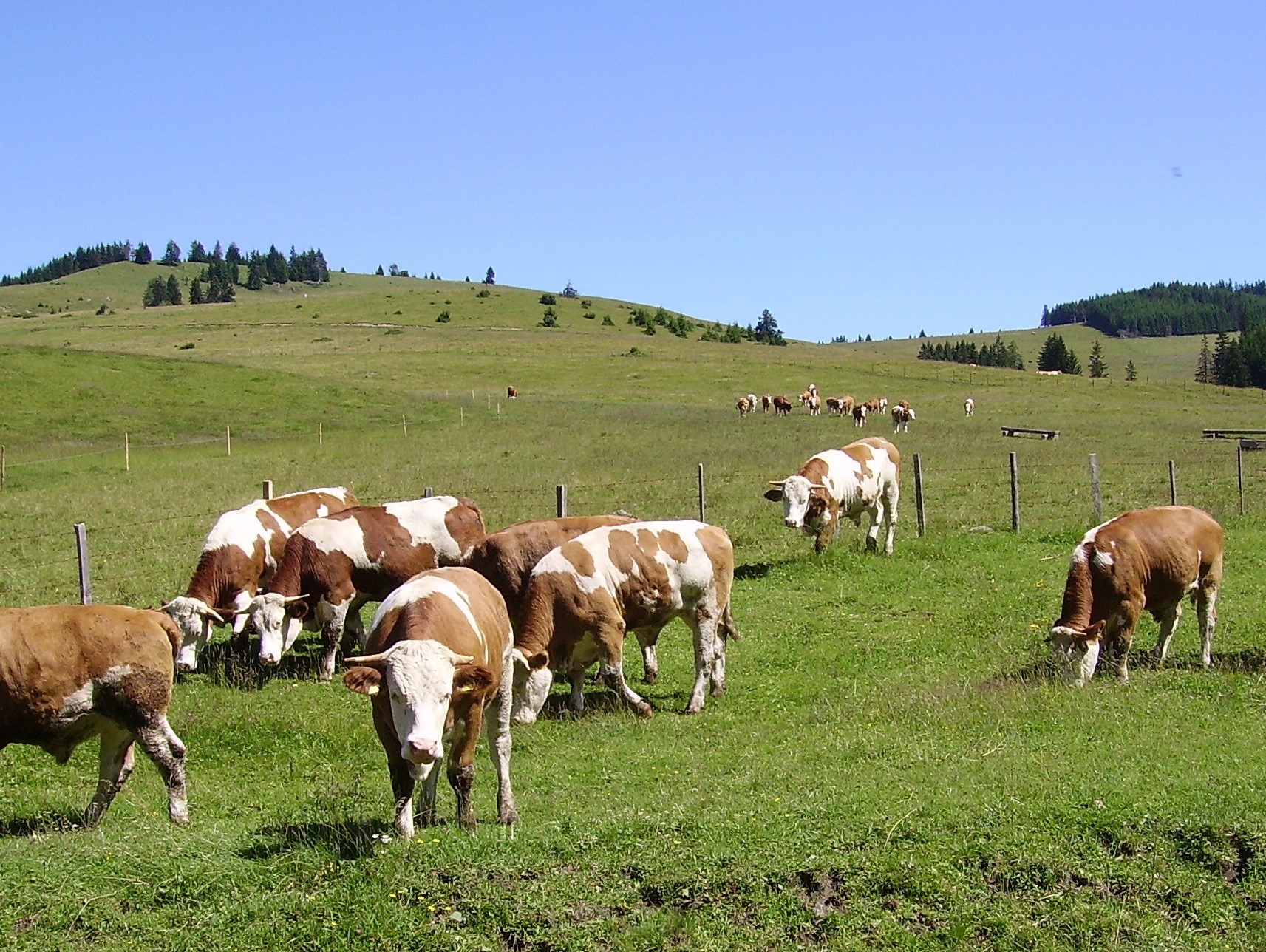The yields from alpine farming are among the most sustainable agricultural products. That's why the Austrian Almwirtschaft, AMA-Marketing and HBLFA Raumberg-Gumpenstein initiated this project.
Structuring the project
Oxen, young cattle and lambs were selected for the practical slaughter trial. Some of the animals would be slaughtered directly after the cattle drive and the other part after two to four months of fattening in the stable. Above all, the internal quality of the meat was assessed (tenderness, marbling, meat color).
Second, a large data set from the AMA cattle database and the ÖFK (Austrian Meat Control) was evaluated. The criteria that were examined in more detail when it came to slaughter quality were the slaughter weight, the slaughter age, the meat and fat classes and the net daily gain. The data set was used to examine the influence of the time of slaughter after the cattle drive and the breed or cross for oxen, calves, young cattle and young cows.
Basically, it turned out that oxen and calves slaughtered soon after Alpung are generally older, but also lighter than those slaughtered later. In principle, the carcass quality improves for both oxen and calves with a later slaughter date after alpine farming. For young cattle and young cows, the connection between the time of slaughter and the quality of the slaughter is less clear.
Introduction to final report
Across Austria, around 300,000 cattle and around 110,000 sheep, along with other animal species, are slaughtered every year. In 2021, there were almost 24,000 farms with alpine pastures, and the alpine fodder area was over 300,000 hectares (HOFER 2021). Most alpine pastures and alpine fodder areas are found in Tyrol, Carinthia, Salzburg, Styria and Vorarlberg, although a slight downward trend has been noticeable for years. In addition to a protective and ecological function, alpine pastures also have an important sociocultural function. For hikers, skiers, tourists, those seeking relaxation and consumers, the term “Alm” usually has a very positive connotation. In addition, alpine products (milk, meat) also have a very good image. In the beef sector, there are already a few Austrian branded meat programs that require at least one alpine pasture. Several other branded meat programs include “alm-like” designations in their program names, such as “mountain,” “Alpine country,” “Alpine region,” “ALMO,” and “mountain pasture,” without requiring alpine farming. Based on the Austrian Alpine economy and AMA marketing, there is a great effort to promote Alpine products (milk and meat), market them in a targeted manner and thereby achieve more appreciation and added value for Alpine products and Alpine farmers. The aim of the evaluations and results presented here was to provide a data basis that can support the formulation of Alm branded meat programs. For this purpose, (1) a data set from the AMA cattle database and the Austrian Meat Control (ÖFK) was evaluated and (2) a practical slaughter trial of oxen, young cattle and lambs was carried out, which were either slaughtered promptly after the cattle drive or after they had been fattened out. A key project goal was to work out the influence of cattle category, breed and slaughter date after cattle drive on carcass quality. The common opinion should also be evaluated that due to the low forage quality of alpine pastures, stable fattening is absolutely necessary after the cattle are driven
team

Dr. Thomas Guggenberger, MSc
Head of the Institute for Livestock Research







